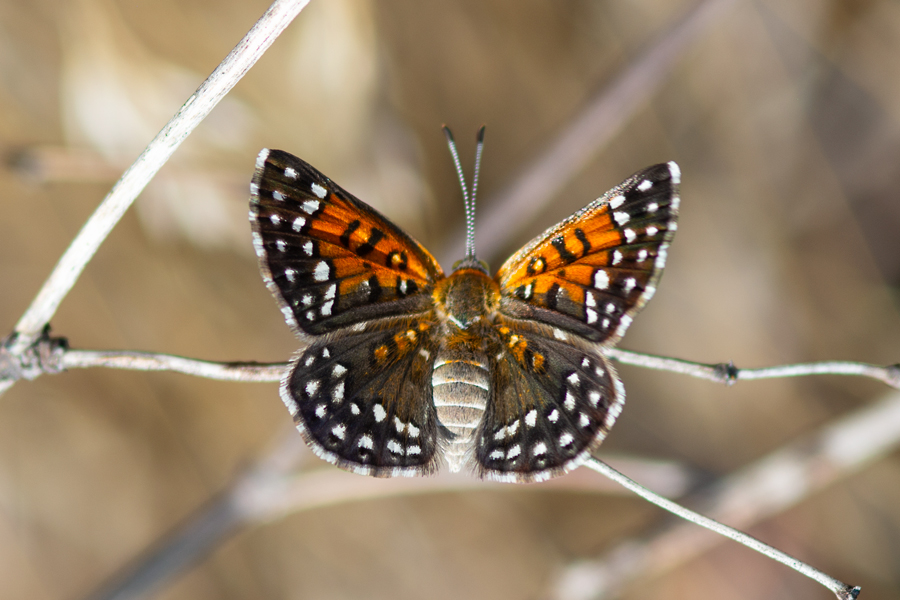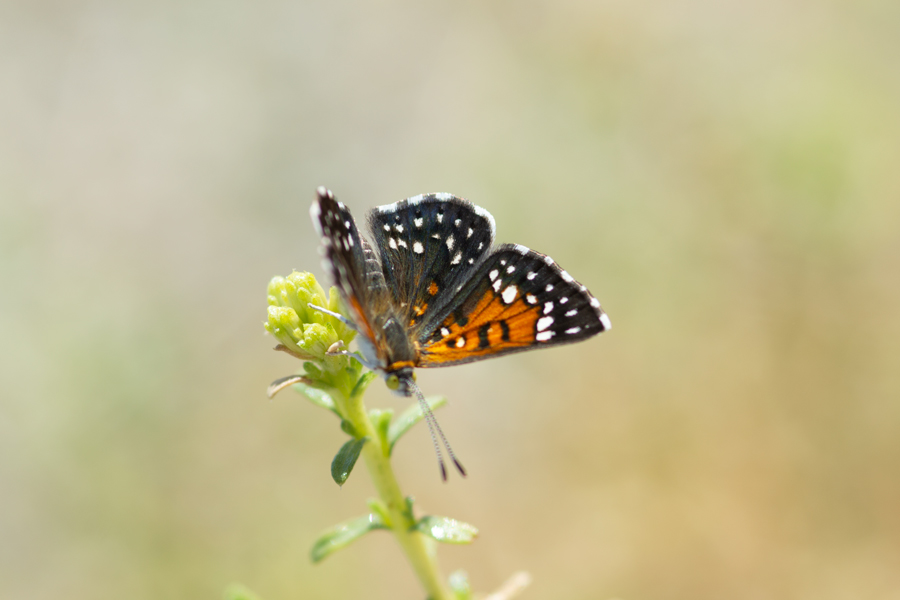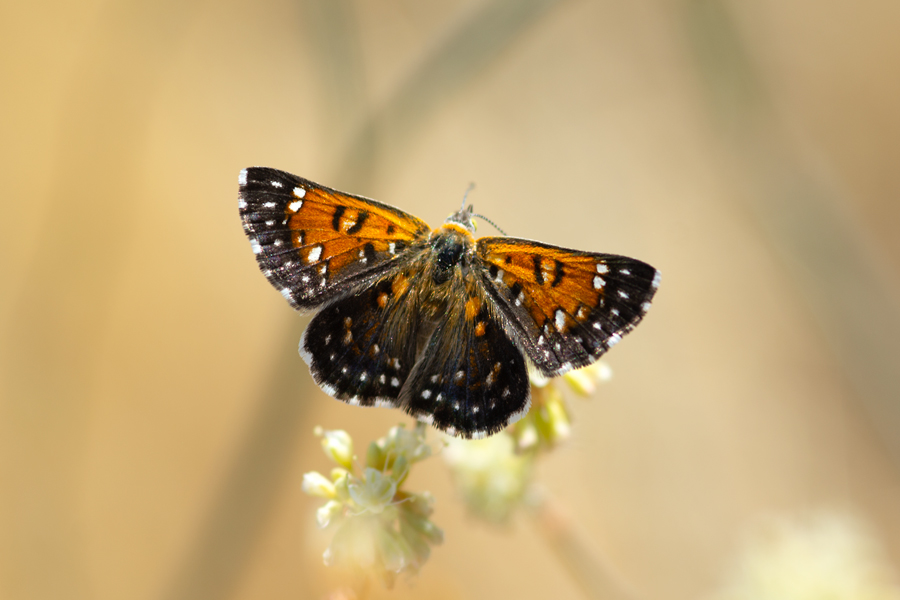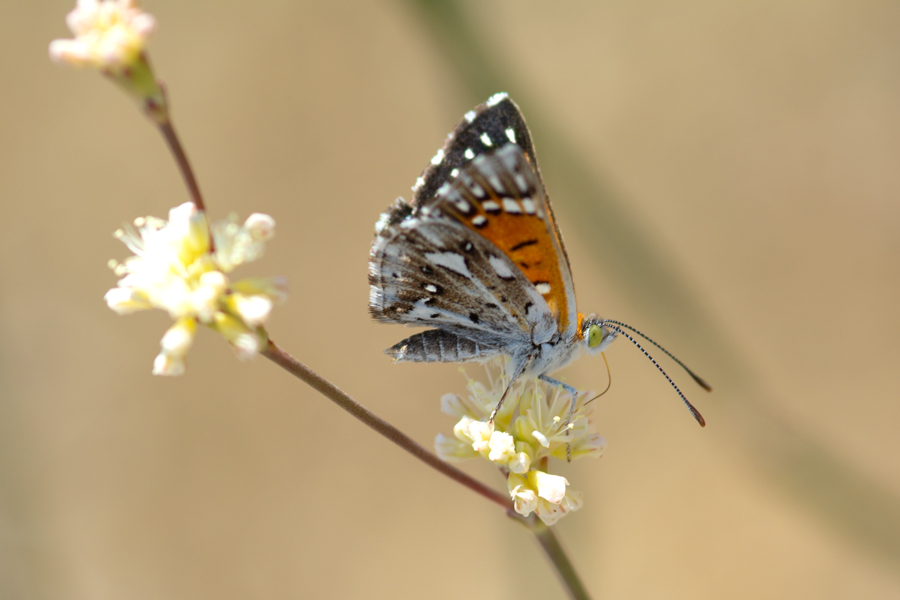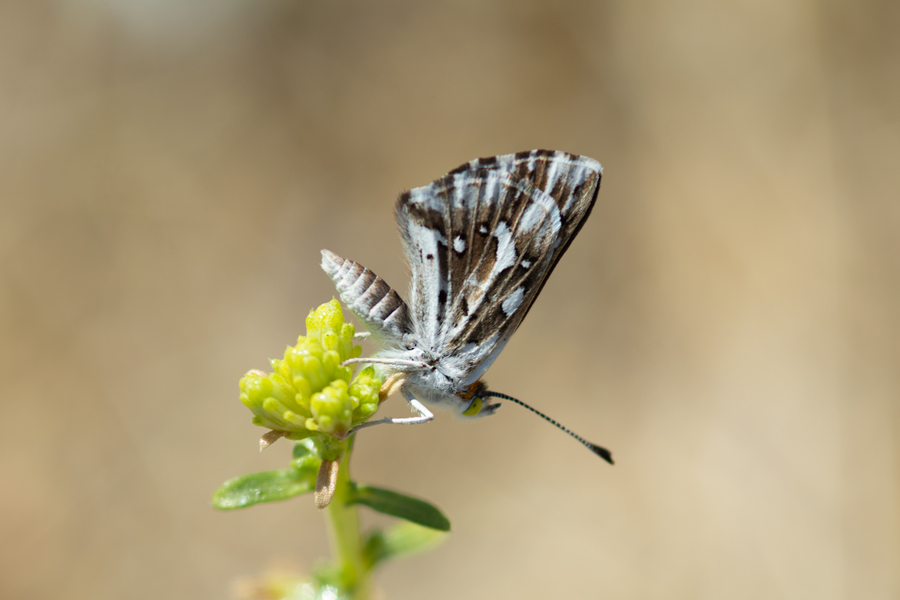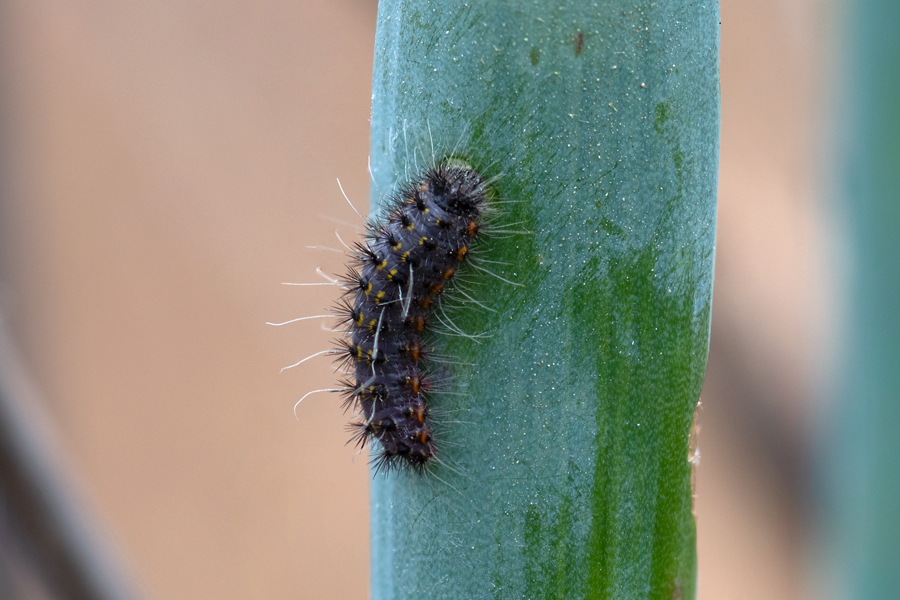Apodemia mormo Coast Range segregate
Mormon Metalmark
This beautiful metalmark flies in the late summer and into autumn using Eriogonum nudum var indictum in the Coast Ranges. What really sets this one apart is its tendency to look like the endangered subspecies langei, best known from the Antioch Dunes in the Bay Area. Add this to the list of interesting single-brooded, fall-flying mormo that use a late-blooming buckwheat. It's difficult to put a name to these at this point (Ken Davenport has it as a "near mormo" segregate, which makes sense to me). Its appearance and choice of host plant may suggest it deserves a name that helps underscore its distinctiveness. But the bigger picture is only beginning to come into focus, and taxonomic determinations made largely on the basis of appearance aren't holding up well in light of the DNA results. Some believe langei itself may not prove to be any more distinct an entity than many other populations, including, perhaps, this one.
